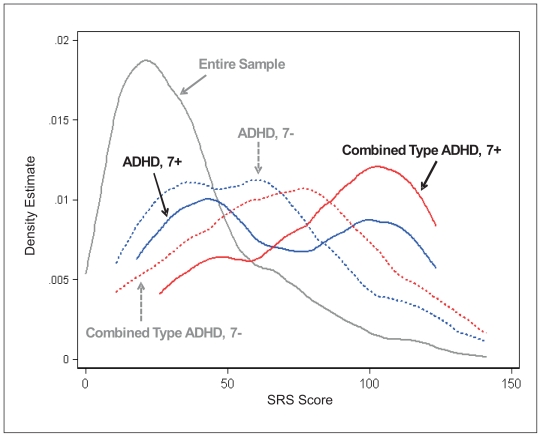Figure 1.
In the sample as a whole (N = 954), SRS scores cluster in the normal range (roughly, 0 to 50; gray line). There is a noticeable shift towards higher elevated SRS scores in the presence of ADHD (any type, N=142) in both carriers (solid blue line, N=39) and non-carriers (dashed blue line, N=103) of the DRD4 7-allele, with a suggestion of bi-modality amongst carriers. Finally, the trend towards higher scores is especially salient in children with DSM-IV combined type ADHD for both 7-repeat allele carriers (solid red line, N=19) and non-carriers (dashed red line, N=32). The data suggest that the bimodality observed in the SRS scores for ADHD children as a whole is driven by the subset of 19 children who present with combined type ADHD and carry the DRD4 7-allele.

